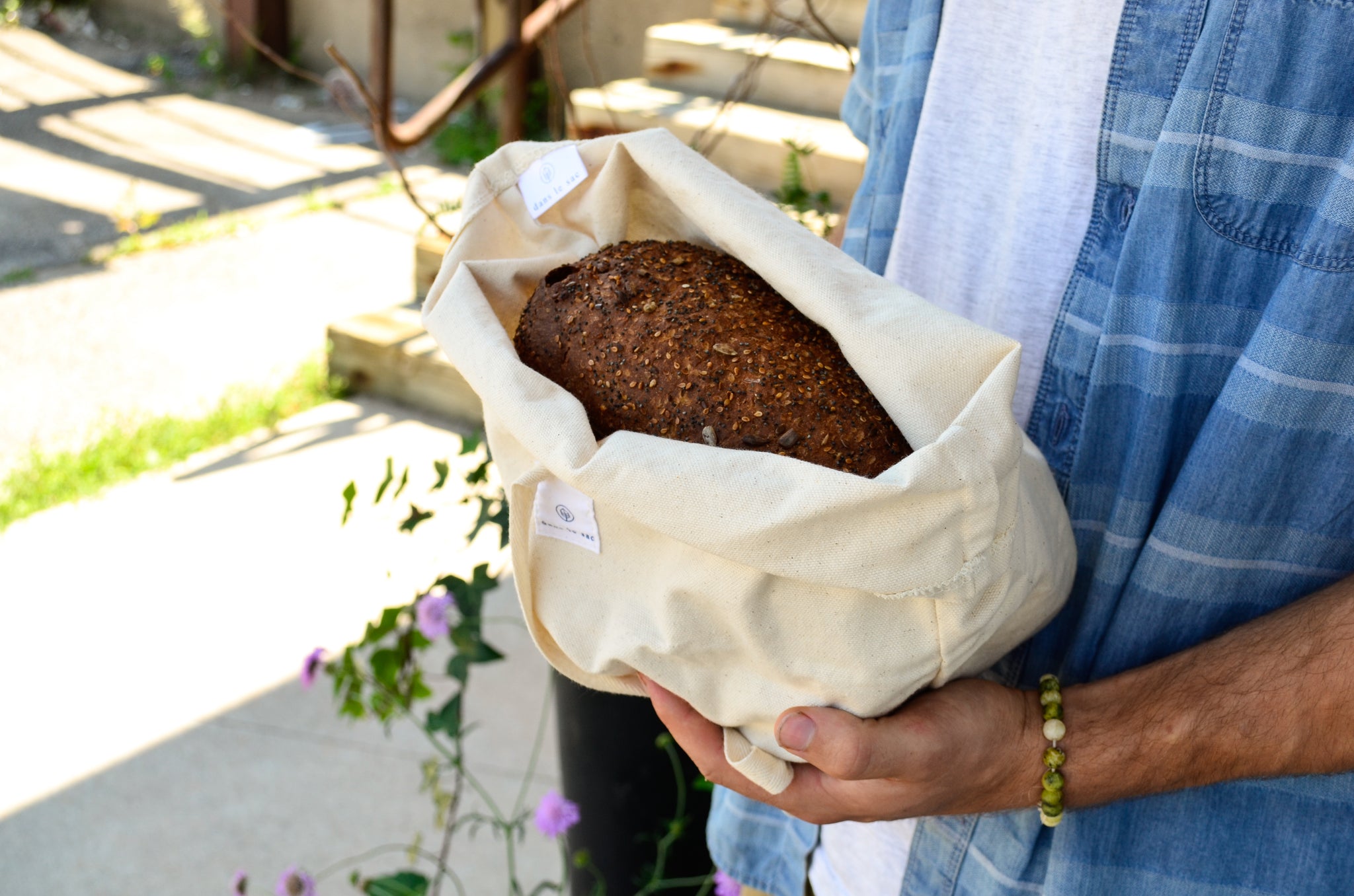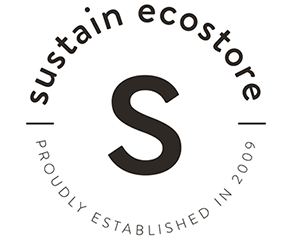The Meaning of 'Zero-Waste'

The more aware we become of plastic and wasteful living practices, the more pervasive they seem. And it's true, plastic and waste surrounds us at every turn, and making changes can feel insignificant in the face of such sheer volume—but the truth is that the opposite is true. You can indeed make a huge difference, if enough of us choose to act. As consumers, we have direct control over what we bring into our lives and how much waste we are personally responsible for. We have the ability to choose. Every time you consume or purchase something you are casting a vote. Choosing to avoid plastic or not support the pervasiveness of it definitely matters and it definitely adds up! Our economy works on a demand/supply basis, so if our consumption of disposables goes down, even just a little bit globally, that's progress.
To live consciously and sustainably entails embracing a lifestyle based on values and principles that you get to live out every day. But it's important to note that perfection, or achieving absolute 'zero-waste', is not always possible—measuring yourself against an impossible standard is the quickest way to fail. Each of us exists on a spectrum of 'green', and the goal is to be moving towards something more sustainable all the time, even in incremental steps.
At Sustain, we have embraced the concept of 'zero-waste' and eliminating single-use plastic fully, offering a comprehensive selection of reusable alternatives to disposable items, and we are very active in our efforts to raise awareness.
how is zero-waste defined?
At first glance, it might seem as though living zero-waste means producing no "waste" at all, which feels and largely is, impossible. To live zero-waste is to strive toward an ideal of producing less/no waste headed for landfill. Bea Johnson is largely to credit for making this idea a global movement. It is truly a lifestyle, as this set of values will impact many, many decisions you make every day. Even though the idea may seem daunting at first, the key is to proceed step by step, one change at a time. This helps each habit stick rather than lead to overwhelm and then to abandonment, and it also helps prevent you from placing unreasonable expectations upon yourself!
The following are Bea's list of guidelines, in order of priority:
Refuse what you do not need, such as:
- promotional items such as pens or bags, that 10th toothbrush from the dentist, etc.
- business cards you will never need
- complimentary hotel toiletries and other 'freebies' such as food samples, party favours, etc.
- single-use plastics, like bags, straws or cutlery, or individually wrapped foods
- junk mail—not always possible, but make the attempt by following these steps
As Bea Johnson writes in her book Zero Waste Home: "Every bit we accept, or take, creates a demand to make more. In other words, compulsive accepting (versus refusing) condones and reinforces wasteful practices."
Reduce what you do need and cannot refuse—embrace minimalism, choose quality over quantity, experiences over things. At Sustain we really believe in this principle; choose wisely what you agree to bring into your home; spend more on an item that's really well made, that you love, and then take care of it so there is no need to replace it.
Take a waste tally—pay attention as you fill your recycling or waste bin, or have a quick look at the end of the week. This will give you an idea of the types of waste you are producing, and then prioritize finding alternatives based on your findings!
Reuse what you consume and cannot refuse or reduce—assemble a toolkit of reusables, find ways to repurpose, such as cutting up old t-shirts to use as rags, find new uses for empty glass bottles, redistribute (donate, etc) rather than throw away, repair, borrow/swap, etc.
Again, Bea writes that reusing is the tipping point of zero-waste: it addresses both consumption and conservation efforts and offers an ultimate diversion from disposal. It can effectively (1) eliminate wasteful consumption (2) alleviate resource depletion and (3) extend the useful life of the goods purchased.
At Sustain, we specialize in this step. Yes, we are asking you to make a purchase and choose to consume, but wise choices in assembling a zero-waste kit of reusable items designed to eliminate disposables result in having to purchase only a few items that you will reuse for years upon years.
Here is our list of toolkit essentials, but FIRST, carefully assess your habits, which will tell you exactly what you need. For example if you do several small grocery shops a week, you may only need 1-2 reusable shopping bags, but if you tend to do larger shops less often, you will likely need 5-6. If you are unsure start with one of each and build from there.
on the go- Cloth Shopping Bags
- Insulated Travel Cup for Beverages
- Glass Jars
- Water Bottle
- Produce/Bulk/Bread Bags
- Reusable Cutlery/Napkin
- Stainless Steel Straw
- Lunch Kit (many options here!)
at home
- Stainless Steel Food Containers
- Reusable Cloths (to replace paper towels)
- Cloth Hankerchiefs
- Kitchen Towels/Rags
- Glass Jars (for dry ingredient storage, for refilling of products such as cleaners or vinegar, DIY projects, etc.)
- Bathroom Products (menstrual products, razors, etc.)
- Reusable coffee filters
Recycle what you cannot Refuse, Reduce or Reuse—recycling in and of itself is not a perfect solution—it does not address over-consumption habits, it still takes resources to implement, facilities may not exist for some 'recyclable' products, or access could be limited. Ultimately the goal would be to eliminate the need to recycle from your home as well, but since this is difficult/impossible to do, you could take these steps to ensure your recycling is effective (and, if you follow the first 3 R's, you will produce significantly less recycling):
- If you purchase something that comes with plastic packaging, ensure that it is easily recycled and accepted at your facility. For example, #1 and 2 plastic is highly recyclable and largely accepted.
- Know your recycling collection system and policies inside and out so that you can streamline and eliminate unintentional landfill waste. As an example, heavily food-soiled waste that is visible inside a clear recycling bag usually leads to the entire bag being sent to landfill because of cross-contamination.
- If possible, purchase items made from recycled content to encourage the market to move in this direction.
Whenever you purchase something, evaluate it's total lifecycle: what is it made of, and what happens to it when you're through with it? At Sustain, we use this framework to determine if we should carry a product or not and have succeeded in creating an offering a product line where very little if any will every end up in landfill if properly disposed of.
Rot (Compost) the rest—together with recycling, composting should eliminate what waste is left, namely food waste. If you have a curbside green bin program, the process is quite easy. If not, backyard composting is easy with a little investment in learning the ropes (find a book on it at the library, or research it online). Cool tip: biodegradable compost bags seem like a great idea, but they still take resources to be manufactured and they add cost. Follow this simple video to make compost 'bags' for a standard green bin from newspaper!



